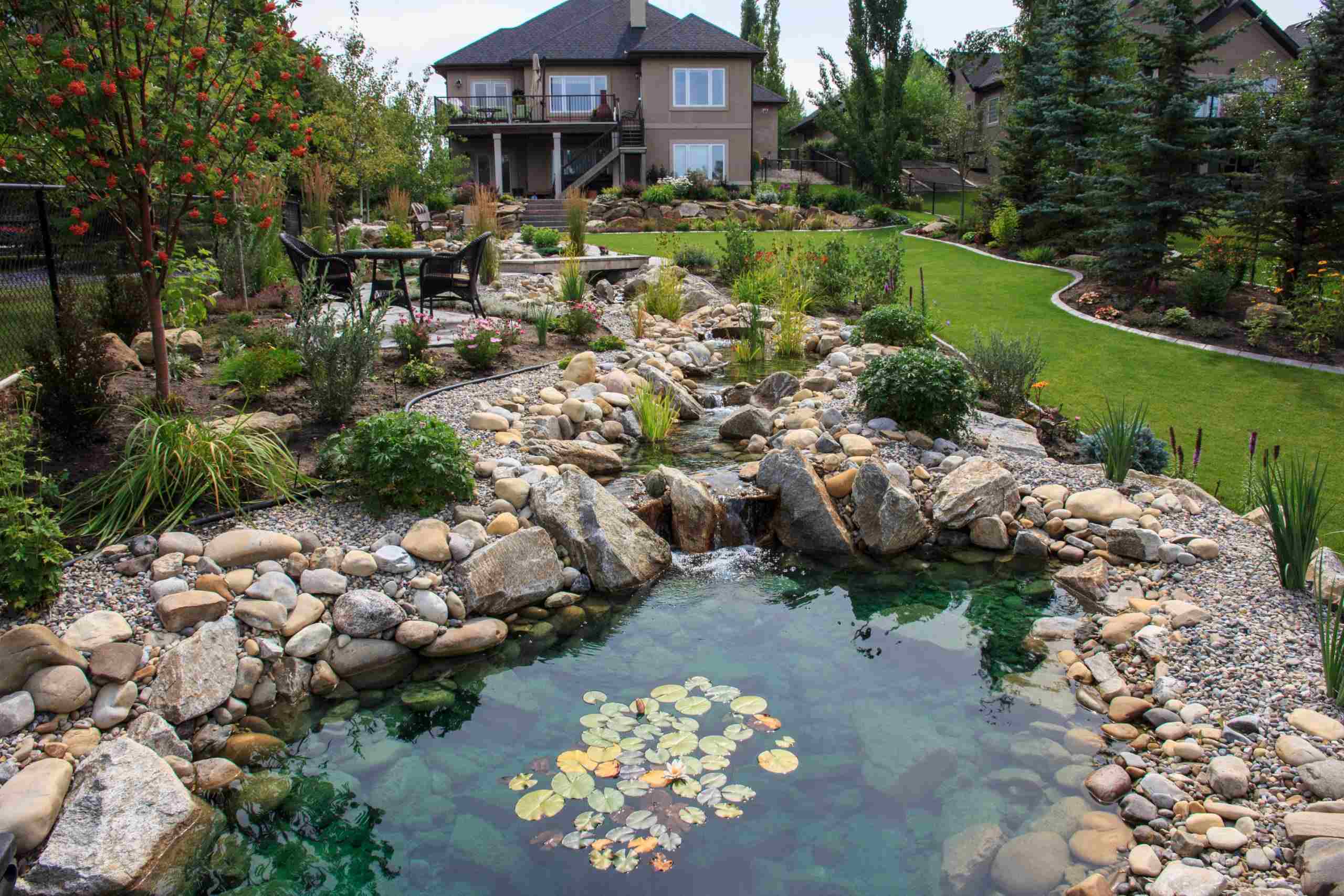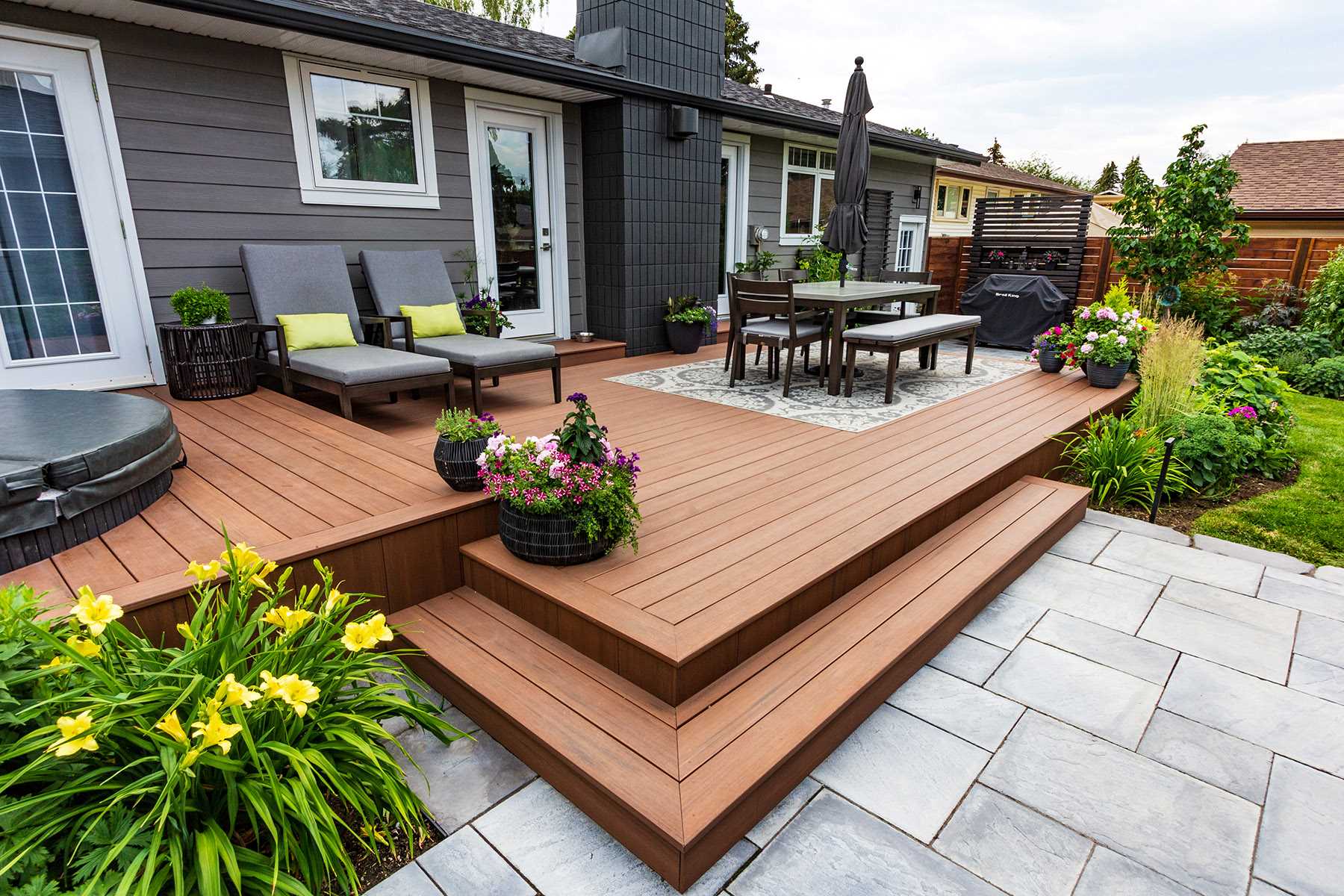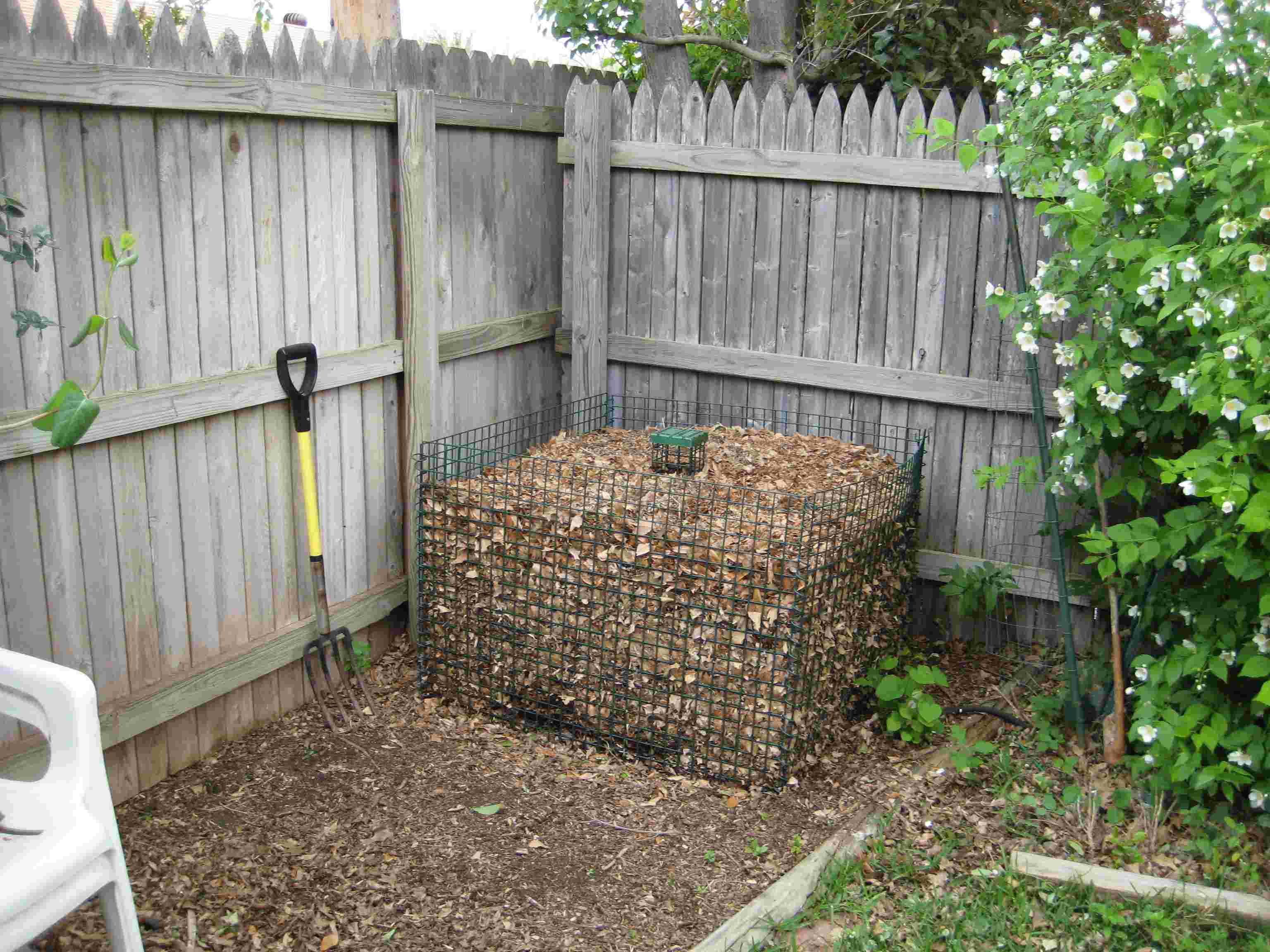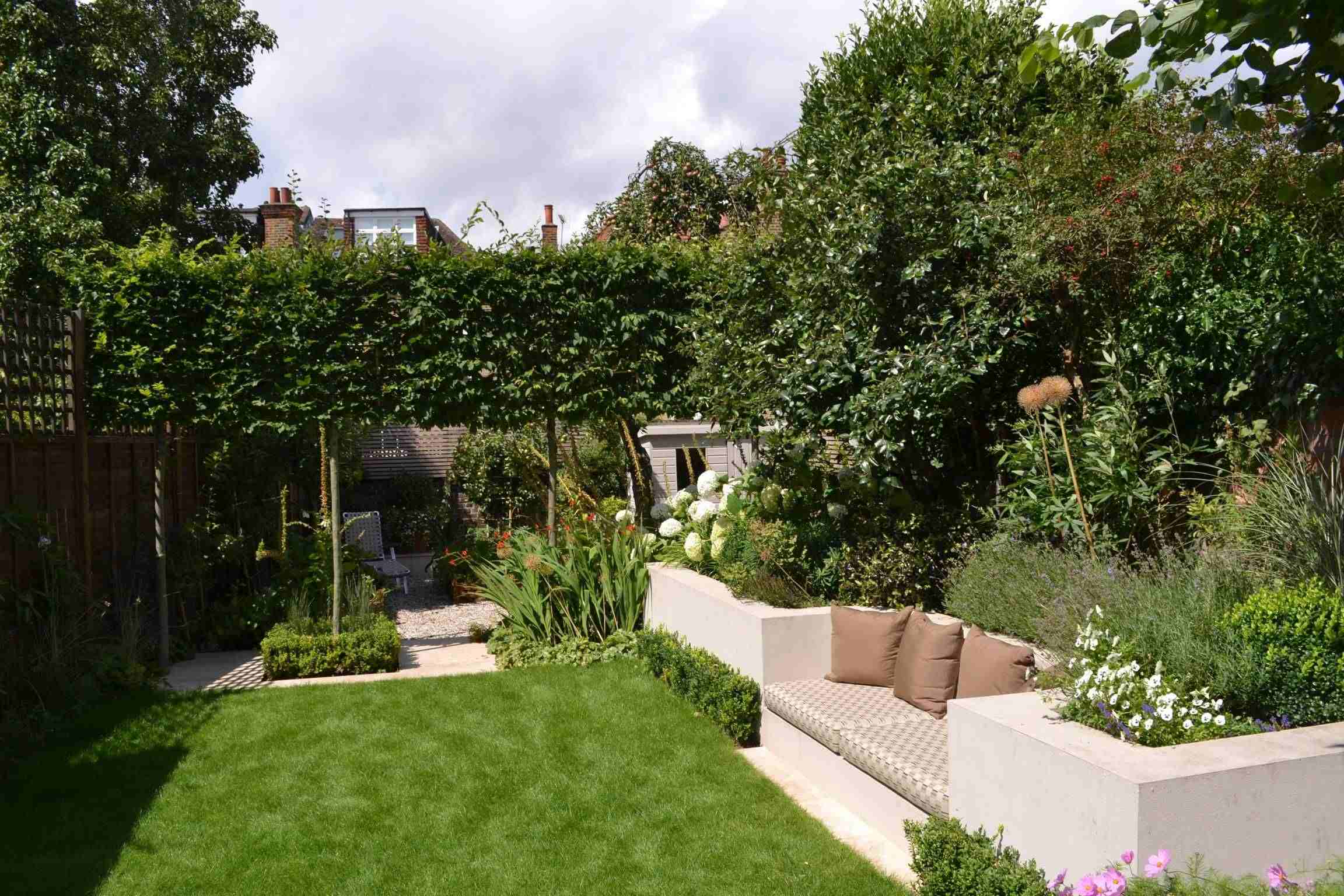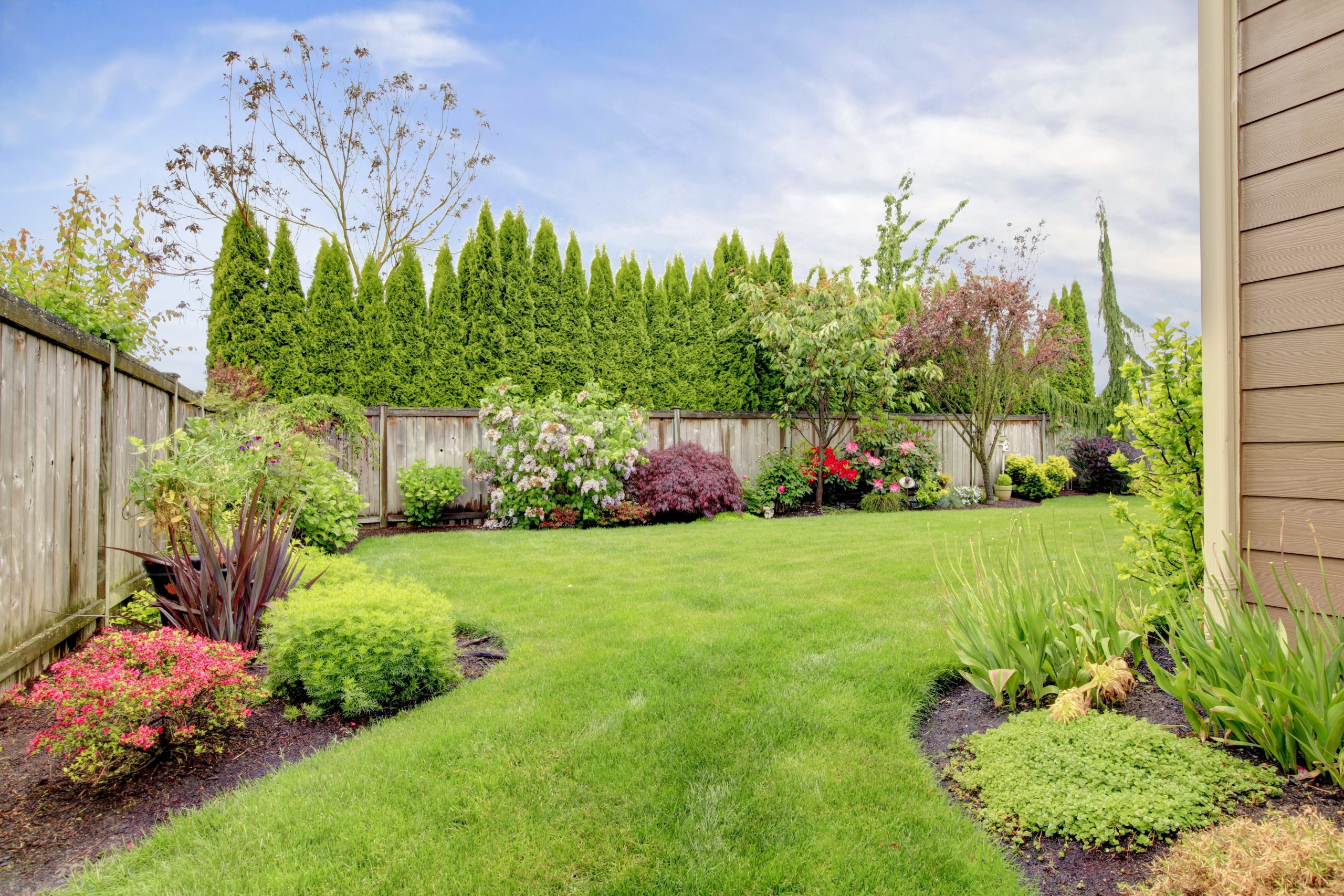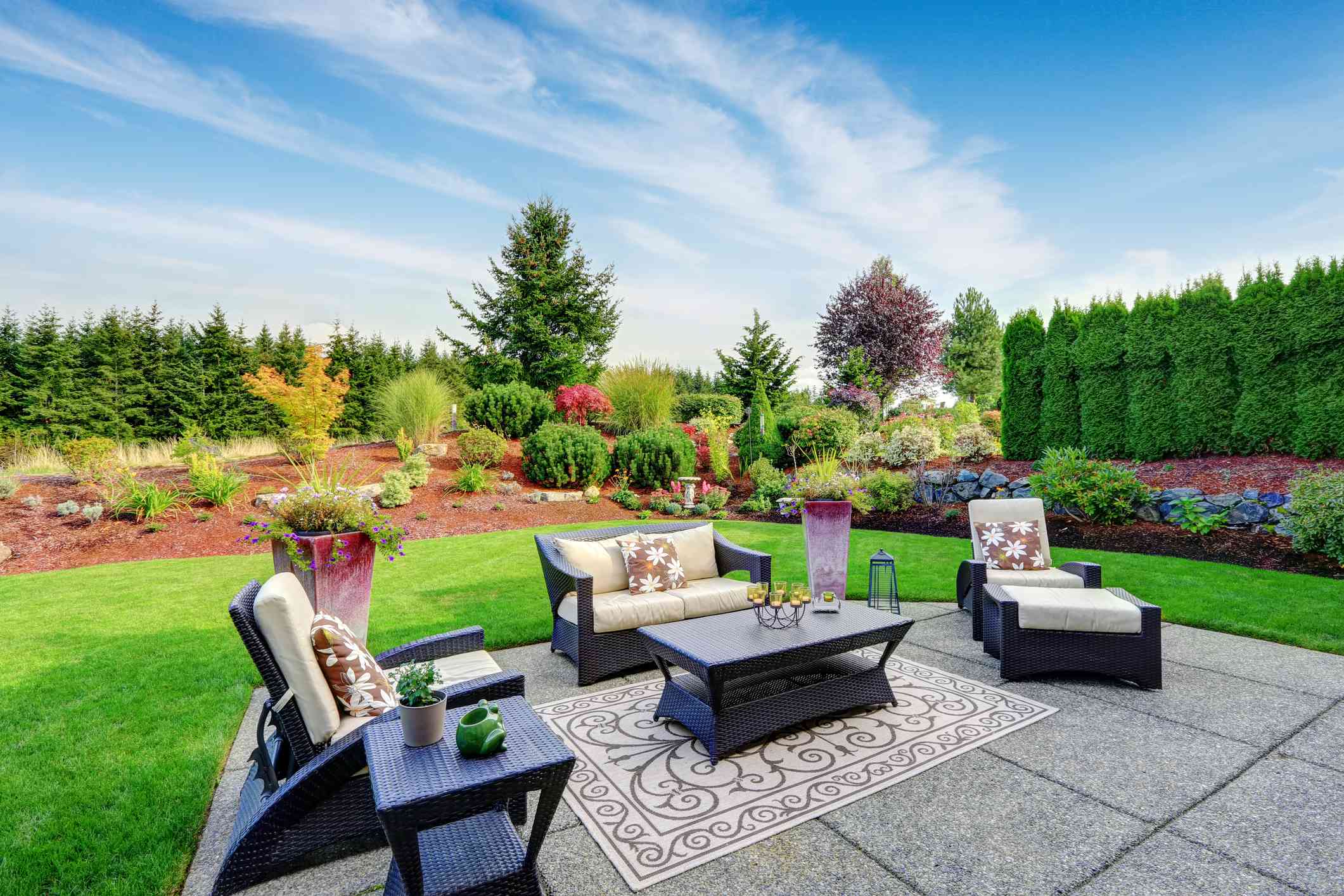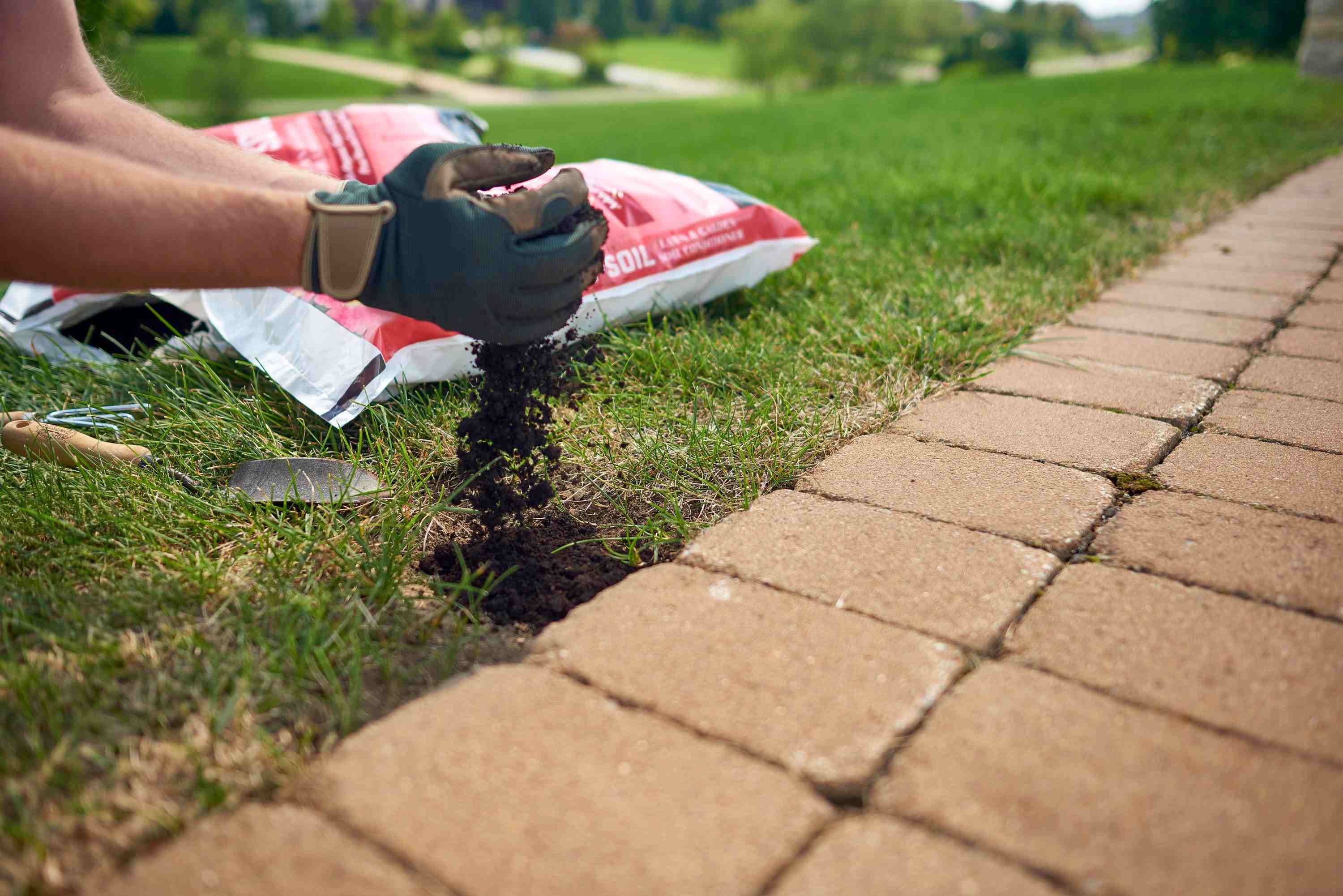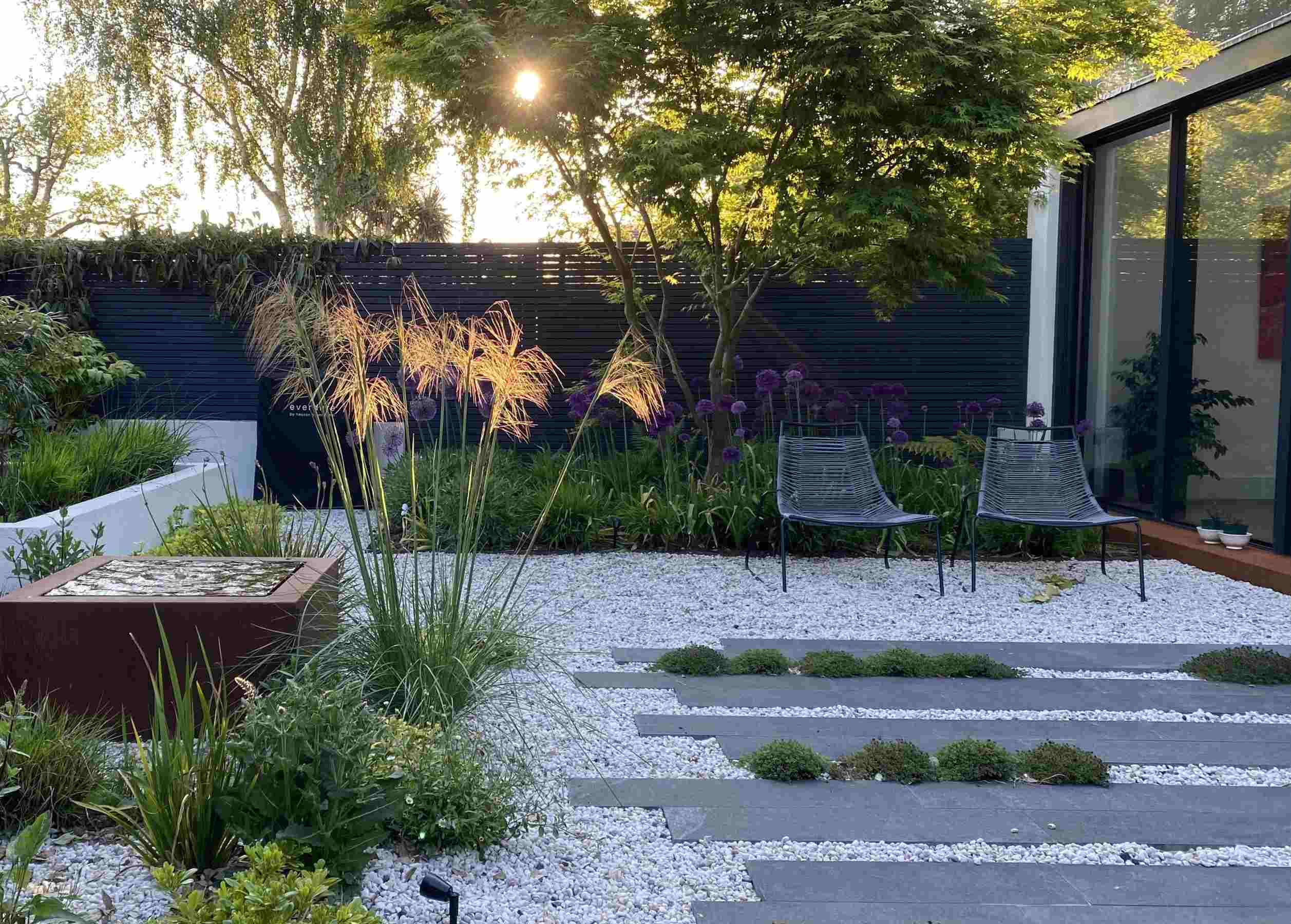Home>Gardening Tips and Tricks>How To Flatten Sloped Backyard
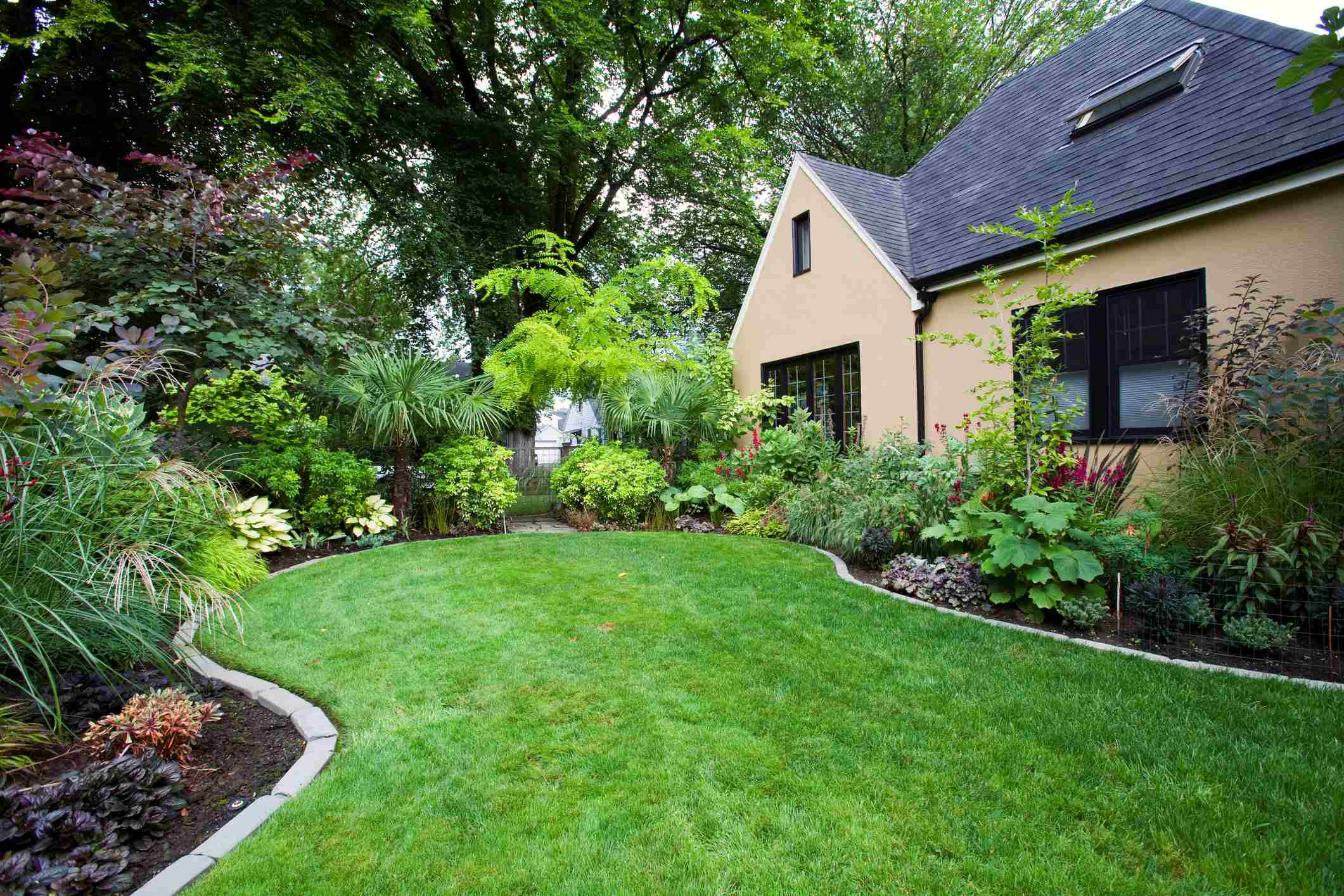

Gardening Tips and Tricks
How To Flatten Sloped Backyard
Modified: February 8, 2024
Learn how to solve the problem of a sloped backyard with our expert tips and techniques. Achieve a flat and functional outdoor space with ease!
(Many of the links in this article redirect to a specific reviewed product. Your purchase of these products through affiliate links helps to generate commission for Chicagolandgardening.com, at no extra cost. Learn more)
Table of Contents
Introduction
Having a sloped backyard can pose many challenges for homeowners. It not only limits the functional use of the space but also makes it difficult to maintain and landscape. However, with the right approach and some basic knowledge of landscaping, you can transform your sloped backyard into a beautiful and functional area.
In this article, we will guide you through the process of flattening a sloped backyard. From assessing the slope to implementing effective landscaping techniques, we’ll provide you with the steps necessary to achieve a level and usable outdoor space.
Flattening a sloped backyard requires careful planning and understanding of the terrain. It is essential to evaluate the extent of the slope and consider any potential drainage issues before starting the project. By taking these factors into account, you can create a backyard that is not only aesthetically pleasing but also practical for various activities.
Whether you want to create a level area for a patio, deck, or simply enjoy a more even surface for gardening and leisure, this guide will cover all the essential steps to make your vision a reality. We will explore clearing the area, building retaining walls, creating terraced levels, installing a drainage system, filling and leveling the yard, and finally, planting and landscaping for a finished look.
It’s important to note that flattening a sloped backyard is a significant project that may require professional assistance, especially for complex terrains. However, with the right tools, resources, and a bit of patience, you can tackle this transformation on your own and enjoy the benefits of a leveled backyard.
So, let’s dive into the process of flattening a sloped backyard and discover how you can turn your uneven outdoor space into a functional and visually appealing area for outdoor enjoyment.
Assessing the Slope
Before you begin the process of flattening your sloped backyard, it’s crucial to assess the slope and understand its characteristics. This evaluation will help you determine the extent of the slope and identify any potential challenges that may arise during the leveling process.
Start by observing the slope from different angles and taking note of any significant changes in elevation. You can use a level or a measuring tool to get accurate measurements of the slope’s grade. This will give you a better understanding of the slope’s severity and assist you in developing an appropriate plan of action.
During the assessment, it’s also important to consider the direction of water flow. Is water collecting in certain areas of the slope or causing erosion? Understanding the drainage patterns will help you address any potential flooding or water-related issues once the slope is leveled.
Additionally, assess the type of soil in your backyard. Different soil compositions can vary in their ability to retain water and support vegetation. Sandy soil, for example, drains water more quickly, while clay soil tends to retain water, potentially causing saturation or poor drainage issues.
If your backyard slope is excessively steep or has unstable soil, it may be necessary to consult with a professional engineer or a landscape architect. They can provide valuable insights and recommendations for creating a safe and stable foundation for your leveled yard.
While assessing the slope, it’s essential to take into account any existing features within the backyard, such as trees, shrubs, or structures. Consider how these elements may be affected by the leveling process and what adjustments need to be made to preserve or relocate them.
By thoroughly evaluating the slope, water drainage, soil composition, and existing features, you’ll be equipped with the necessary information to develop a sound leveling plan. This assessment will lay the foundation for the subsequent steps in the process, ensuring that your efforts are efficient and effective in achieving a flat and functional backyard.
Clearing the Area
Once you have assessed the slope of your backyard, the next step in flattening the area is clearing it of any obstructions. This includes removing vegetation, rocks, debris, and any other objects that may hinder the leveling process.
Start by clearing away any large plants, such as trees, bushes, or shrubs, that are in the way. If you plan to relocate them, carefully dig around the root system and transplant them to a suitable location within your yard. If not, you may need to enlist the help of professionals to remove them safely.
Next, remove any smaller plants or weeds that are present. Use a shovel or a garden fork to loosen the soil and carefully dig around the root systems. Be sure to remove all the roots to prevent any regrowth in the future. Dispose of the plant material properly, either by composting or recycling.
Aside from vegetation, rocks and other debris can also impede the leveling process. Clear the area of any rocks, stones, or large objects that may pose a tripping hazard or interfere with the construction of retaining walls.
If your slope has existing grass, you might consider removing it before proceeding with the leveling process. This step may not be necessary if you plan to install retaining walls or use other techniques to create terraced levels. However, if you prefer a smooth and even surface, removing the grass can provide a clean canvas for your landscaping project.
In some cases, clearing the area may require the use of heavy machinery, such as bobcats or excavators, especially for larger-scale projects. If you are unsure or uncomfortable operating this equipment, it is recommended to hire professionals who are experienced in land clearing.
Finally, once the area is cleared of vegetation and debris, take the time to evaluate the soil composition. If necessary, make any amendments or improvements to ensure proper drainage and a healthy growing environment for your future landscaping.
Clearing the area of vegetation, rocks, and debris is a critical step in preparing your sloped backyard for leveling. By taking the time to properly clear the space, you will have a clean and organized area to work with as you move on to the next stages of the flattening process.
Building Retaining Walls
One of the key components in flattening a sloped backyard is the construction of retaining walls. Retaining walls are structures designed to hold back soil and prevent erosion, creating level terraces on the slope. These walls not only add visual interest but also contribute to the overall stability and functionality of the leveled area.
Before starting the construction, it’s important to determine the height and length of the retaining walls needed. This depends on the severity of the slope and the desired terraced levels. Consider consulting with a professional to ensure proper design and engineering, especially for taller walls or challenging slopes.
The materials for building retaining walls can vary, including concrete blocks, bricks, natural stones, or timber. Choose a material that suits your aesthetic preferences, budget, and durability requirements. It’s essential to select a material that can withstand the pressure of the soil behind it and the weather conditions in your area.
Start by marking the position of the retaining walls and excavating the area for the footing. The footing provides a stable foundation for the walls and helps distribute the weight evenly along the slope. Dig a trench to the necessary depth, ensuring it is level and compacted. Place a layer of gravel or crushed stone to improve drainage, and reinforce with steel bars if recommended.
Next, begin building the retaining walls layer by layer, following the manufacturer’s instructions or professional guidance. Ensure that each layer is level and plumb, using a level and a string as a guide. Proper alignment and stability of the retaining walls are crucial to their effectiveness in holding back the soil.
If using mortar or adhesive, be sure to apply it according to the manufacturer’s instructions, allowing proper drying times between layers. Alternatively, if using dry-stack materials, make sure the blocks or stones are snugly fit together, creating a sturdy and secure wall.
During the construction process, it’s essential to periodically check for any bulges or unevenness in the wall. Adjust accordingly to maintain a straight and level structure. Additionally, consider incorporating drainage pipes or weep holes into the retaining walls to allow for proper water drainage and prevent hydrostatic pressure build-up.
Building retaining walls can be a challenging task, particularly for larger or more complex projects. It is recommended to consult with a professional or hire a contractor who has experience in constructing retaining walls. They can provide expert guidance and ensure that the walls are built to code and in compliance with safety requirements.
Remember, proper construction and maintenance of retaining walls are essential for their longevity and functionality. Taking the time to build strong and stable walls will ensure the success of your leveled backyard and provide a solid foundation for the next steps in the process.
Creating Terraced Levels
Once you’ve built the necessary retaining walls, it’s time to create terraced levels in your sloped backyard. Terracing involves dividing the slope into multiple flat or gently sloping sections, creating usable spaces for various activities such as gardening, entertaining, or relaxation.
Start by carefully planning the layout and design of the terraced levels. Consider factors such as the desired shape and size of each terrace, the accessibility between levels, and the overall aesthetic appeal. Sketch out your design or use landscaping tools to visualize the final result.
Begin the construction of terraced levels by excavating the areas between the retaining walls. Use a shovel or a mechanical excavator to remove the excess soil and create the desired flat surfaces. Create gentle slopes to allow for proper water drainage while ensuring that the terraces are level enough for comfortable use.
To further enhance the stability and aesthetics of the terraced levels, consider adding steps or pathways between each terrace. This will provide convenient access and create a visually appealing structure. Use materials such as stone pavers, bricks, or gravel for the steps and pathways, keeping in mind the overall design and functionality.
During the construction process, it’s important to take into account the water drainage system. Ensure that the slopes are properly graded to direct water away from the retaining walls and into designated drainage areas. Incorporate drainage pipes or channels if necessary to prevent water buildup and erosion.
Once the terraced levels are created, take the time to compact the soil in each terrace to ensure stability. Use a compactor or tamper to press down the soil firmly, reducing the risk of settling or erosion.
Consider incorporating additional features or elements into the terraced levels to enhance the functionality and aesthetics of your backyard. This could include installing outdoor seating areas, building raised garden beds, or adding decorative elements such as fountains or sculptures.
Creating terraced levels requires careful planning and execution to achieve a functional and visually appealing result. If you’re unsure about the construction process or the design, it’s advisable to consult with a professional landscaper or contractor who can provide expert guidance and ensure that your terraced levels are built to meet your needs and withstand the test of time.
By creating terraced levels in your sloped backyard, you can maximize the use of space and create multiple areas for different activities. Take the time to carefully design and construct each level, ensuring proper drainage and stability, to create a beautiful and functional outdoor space.
Installing Drainage System
Proper drainage is an essential aspect of flattening a sloped backyard. Without effective drainage, water can accumulate and cause erosion, compromising the stability of your leveled area. Installing a drainage system is crucial to ensure the longevity and functionality of your newly leveled yard.
Start by evaluating the natural flow of water in your backyard. Observe how water moves during rainfall and identify any problem areas where water tends to pool or collect. These are the areas where you’ll need to focus on installing drainage solutions.
One common method of drainage is to install a French drain. A French drain consists of a trench filled with gravel and a perforated pipe that directs the water away from the leveled area. Dig the trench in a strategic location, ensuring it slopes away from the yard and towards a suitable drainage outlet, such as a storm drain or a dry well.
Another option is to install surface drains, also known as catch basins or grates. These are strategically placed in low-lying or problem areas to collect excess water and divert it away from the leveled area. Surface drains are effective at preventing water accumulation and can be connected to a drainage pipe for efficient water flow.
When installing your drainage system, it’s important to consider the size and capacity of the drains and pipes. This will depend on the amount of water runoff in your area and the size of your leveled yard. It may be beneficial to consult with a professional to determine the appropriate sizing and placement of drainage components.
As you install the drainage system, ensure that it integrates well with the landscaping and aesthetics of your backyard. Consider using decorative grates for surface drains or incorporating the French drain into a garden bed for a more visually appealing solution.
Once the drainage system is in place, regularly inspect and maintain it to ensure proper functioning. Clear any debris or obstructions that may accumulate in the drains or pipes, and check for any signs of damage or clogging.
Remember that proper drainage is critical for the health and longevity of your landscaped area. It helps prevent water damage, erosion, and potential foundation issues. Investing in a well-designed and properly installed drainage system will protect your leveled backyard and ensure its usability for years to come.
Filling and Leveling the Yard
After preparing the slope and installing the necessary retaining walls and drainage system, the next step in flattening a sloped backyard is filling and leveling the yard. This process involves adding suitable material to create a level surface for your outdoor activities and landscaping.
Begin by assessing the depth of fill needed to level the yard. This will depend on the severity of the slope and the desired final elevation. You may need to bring in additional soil, sand, or other fill materials to achieve the desired level. Consider consulting with a landscaping professional to determine the appropriate amount of fill material based on your specific requirements.
Distribute the fill material evenly across the yard, ensuring that it is compacted and leveled as you go. Use a rake, shovel, or a lawn roller to help spread the material and create an even surface. Pay attention to any low areas or depressions and add extra fill material if necessary to achieve a uniform level.
Take care to avoid overfilling or creating mounds, as this can lead to drainage problems and uneven settling of the yard. Aim for a smooth and consistent grading that allows for proper water runoff and a stable foundation for future landscaping and activities.
During the filling and leveling process, it may be necessary to periodically moisten the fill material to facilitate compaction. Moisture helps bind the particles together, increasing the stability and preventing excessive settling.
If your slope had existing vegetation that you removed during the clearing process, consider reseeding or sodding the area once the filling and leveling are complete. This will help prevent soil erosion and establish a lush and healthy lawn.
After the yard is filled and leveled, take the time to assess the overall slope and make any necessary adjustments. Use a level or a measuring tool to ensure that the yard is truly flat and free from any significant variations in elevation. Make any necessary refinements to achieve a precise and even surface.
Once you are satisfied with the filling and leveling of the yard, you are one step closer to enjoying your transformed outdoor space. The leveled yard provides a solid foundation for the final steps of planting and landscaping, creating a beautiful and functional backyard for your enjoyment.
Planting and Landscaping
With the yard filled and leveled, it’s time to bring life and beauty to your newly transformed space through planting and landscaping. This stage allows you to personalize your backyard and create a visually appealing environment that suits your preferences and lifestyle.
Start by selecting the right plants for your landscape design. Consider factors such as sunlight exposure, soil type, and climate in your area. Choose a variety of plants that will thrive in your specific conditions and provide visual interest throughout the seasons.
When planting, consider the different zones or levels of your yard. Use taller plants or trees towards the back or higher terraced levels and gradually transition to shorter plants towards the front or lower levels. This creates depth and visual appeal in your landscape design.
Take into account the overall theme or style you want to achieve in your backyard. Whether you prefer a lush and tropical garden, a minimalist and modern design, or a colorful floral display, select plants and landscaping elements that align with your vision.
Incorporate various landscaping elements to enhance the aesthetics of your backyard. This may include adding mulch or decorative rocks around plants, installing landscape lighting for ambiance, or using hardscape features like patios or walkways for functionality and aesthetics.
When positioning plants, consider their growth patterns and their needs in terms of space and sunlight. Leave enough room for each plant to grow and thrive. Group plants with similar needs together to make irrigation and maintenance more efficient.
Incorporate a mix of evergreen shrubs and perennial flowers for year-round interest. These plants provide structure and color to your landscape even during the colder months. Integrate flowering plants for bursts of color and consider using native species to support local ecosystems.
As you plant and landscape, pay attention to the overall balance and symmetry. Consider the size, shape, and color of each plant to create pleasing and harmonious compositions. Use layering techniques, with taller plants in the back and shorter plants towards the front, to create depth and visual interest.
Don’t forget to consider the needs of your plants in terms of water and maintenance. Install an irrigation system or plan regular watering routines to ensure your plants receive sufficient hydration. Properly mulch around plants to retain moisture and suppress weeds.
Regularly maintain and care for your plants and landscaping elements. This includes pruning, fertilizing, and removing any dead or diseased plants. Stay on top of weed control to prevent competition for nutrients and water.
With planting and landscaping, your sloped backyard will be transformed into a beautiful and vibrant outdoor oasis. The combination of carefully selected plants, thoughtful placement, and attention to detail will create a visually appealing and inviting space for you to enjoy for years to come.
Maintaining a Flat Backyard
Once you have successfully flattened and landscaped your backyard, it’s important to establish a regular maintenance routine to keep it in optimal condition. Proper maintenance will not only preserve the beauty and functionality of your leveled yard but also extend its lifespan and prevent potential issues from arising.
One crucial aspect of maintaining a flat backyard is regular inspection of the retaining walls. Ensure that the walls are structurally sound and free from any signs of damage or erosion. If you notice any cracks or shifting, address these issues promptly to prevent further instability.
Regularly check the drainage system, including French drains, surface drains, or any other components. Remove any debris or obstructions that may hinder the proper flow of water. This will help prevent water accumulation and potential erosion in your yard.
Keep an eye on the grading and levelness of your yard. Over time, settling or erosion may occur, necessitating minor adjustments. If you notice any areas that have become uneven or sunken, add additional fill material to maintain a level surface.
Regularly mow and maintain your lawn to keep it neat and healthy. Ensure proper watering and fertilization to promote lush growth and prevent the invasion of weeds. Trim any overhanging branches or plants that may encroach upon the leveled area.
Inspect and maintain your landscape plants. Prune them as needed to maintain their shape and remove any dead or damaged branches. Regularly weed and mulch the planting beds to prevent weed growth and retain soil moisture.
Inspect any hardscape elements, such as patios, pathways, or retaining walls. Repair any cracks or damage promptly to maintain their integrity and safety. Clean these surfaces regularly to prevent the buildup of dirt, moss, or algae.
Regularly inspect and maintain any outdoor structures, such as pergolas, gazebos, or fences. Ensure that they are sturdy and in good condition. Treat wood surfaces to protect against rot and decay, and repair any loose or broken components.
Stay on top of pest and disease control in your yard. Monitor plants for any signs of pests or diseases and take appropriate action to prevent their spread. This may include using organic or chemical treatments, depending on your preference and the severity of the issue.
Regularly assess the overall functionality and appearance of your leveled backyard. Make any necessary adjustments or updates to meet your changing needs and preferences. Consider refreshing the landscaping with seasonal plantings or adding new elements to keep your backyard enjoyable and exciting.
A well-maintained flat backyard not only enhances your outdoor living experience but also protects the investment you’ve made in leveling and landscaping. By establishing a regular maintenance routine and addressing any issues promptly, you can enjoy a beautiful and functional backyard for years to come.
Conclusion
Transforming a sloped backyard into a flat and usable space requires careful planning, hard work, and attention to detail. By following the steps outlined in this guide, you can successfully achieve a leveled yard that not only enhances the functionality of your outdoor space but also adds beauty to your home.
Assessing the slope, clearing the area, and building retaining walls are vital initial steps in the process. These tasks provide the foundation for creating terraced levels that add dimension and usability to your backyard. Installing a proper drainage system ensures that water is managed effectively, preventing erosion and waterlogging.
With the yard filled and leveled, you have the opportunity to bring life and beauty to your space through planting and landscaping. Choose plants that thrive in your climate and landscape design that suits your preferences. Regular maintenance is essential to ensure the longevity of your leveled backyard, including inspecting retaining walls, checking the drainage system, and maintaining landscape elements.
Remember, flattening a sloped backyard is a significant undertaking that may require professional assistance, especially for complex terrains. It’s essential to prioritize safety and achieve proper engineering and construction standards. Consulting with landscapers, contractors, or engineers can provide valuable guidance and ensure the success of your project.
By following the steps outlined in this guide and maintaining your flat backyard, you can create a beautiful and functional outdoor space that you’ll enjoy for years to come. Whether it’s hosting gatherings, gardening, or simply relaxing, your leveled yard will provide endless possibilities for outdoor enjoyment and add value to your home.
Take the time to assess your sloped backyard, gather the necessary tools and resources, and embark on the journey of transforming it into a flat and inviting outdoor haven. With perseverance and a bit of creativity, you can turn your sloped backyard into a stunning landscape that reflects your personal style and enhances your quality of life.
